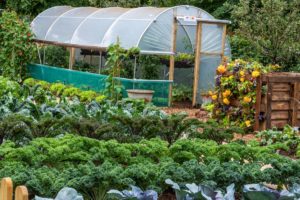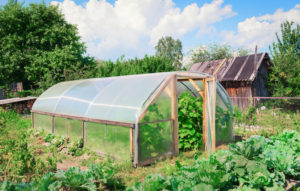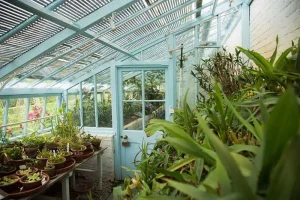Growing your own herbs at home can provide you with a constant supply of fresh and flavorful ingredients, regardless of the time of year.
By cultivating herbs indoors, you can enjoy their fragrance and taste throughout the seasons, without being limited by the growing conditions outdoors.
With the right setup and care, it is possible to grow a variety of herbs such as basil, mint, parsley, rosemary, thyme, oregano, and sage in your home kitchen or indoor garden, providing you with year-round accessibility to these versatile ingredients.
Whether you’re looking to enhance the flavor of your dishes, add some aroma to your space, or simply appreciate the beauty of live plants, growing herbs indoors is an excellent way to achieve these goals and more.
Choose the Right Herbs
Select herbs that thrive in indoor conditions and have a relatively short growth cycle, such as basil, mint, and parsley. These herbs will be more forgiving if you forget to water them from time to time.
Basil, mint, and parsley are all excellent choices, as they are hardy and can tolerate periods of neglect without suffering.
For example, basil is a popular choice for indoor gardens because it grows quickly and can be harvested in as little as six weeks.
Mint is another option that can thrive indoors, as it can tolerate low light and infrequent watering.
And parsley is a hardy herb that can be grown indoors year-round, with minimal maintenance.
These herbs are perfect for busy individuals or those new to gardening, as they are forgiving and can tolerate the occasional forgetfulness when it comes to watering.
With these herbs, you can enjoy fresh, flavorful produce right in your own home, without a lot of fuss or attention.
Pick the Right Containers
Use pots with good drainage holes to prevent overwatering and allow the soil to dry out between waterings. Consider using self-watering pots or herb planters with built-in water reservoirs to minimize maintenance.
When it comes to successfully growing herbs in pots, selecting the right type of pot is important.
Pots with good drainage holes are essential to prevent overwatering and allow the soil to dry out between waterings.
This is particularly important for herbs, as they require well-draining soil to thrive.
Overwatering can lead to root rot and other problems, so it’s essential to ensure that your pot has adequate drainage holes to prevent this from happening.
To take this a step further, consider using self-watering pots or herb planters with built-in water reservoirs.
These types of pots are designed to minimize maintenance, as they allow the soil to draw water from the reservoir as needed.
This means that you can go away on vacation or simply forget to water your herbs for a day or two without worrying about overwatering or underwatering.
Self-watering pots often have a built-in moisture meter that allows you to monitor the soil’s moisture levels.
This means that you can tailor your watering schedule to your specific herbs’ needs, ensuring that they receive exactly the right amount of water.
By investing in a good quality pot with drainage holes and a built-in water reservoir, you can enjoy a low-maintenance and successful herb growing experience.
Provide Adequate Lighting
Most herbs require at least 4-6 hours of direct sunlight per day. Place them near a south-facing window or use grow lights to ensure optimal growth and flavor.
Most herbs require at least 4-6 hours of direct sunlight per day to thrive and produce their best flavor.
To ensure optimal growth and flavor, it’s essential to place them near a south-facing window, which receives the most sunlight throughout the day.
This will provide the herbs with the necessary light energy to carry out photosynthesis, a process that converts light into energy and allows the plant to grow and develop.
If you don’t have a south-facing window, you can use grow lights to provide the necessary light for your herbs.
Grow lights are specially designed to mimic the natural light spectrum and can be placed near the herbs to provide the required amount of sunlight.
There are different types of grow lights available, including LED, fluorescent, and incandescent, so you can choose the one that best fits your needs and preferences.
Regardless of the lighting source you choose, it’s important to ensure that the herbs are receiving at least 4-6 hours of direct sunlight per day.
This will help to promote healthy growth, flavorful leaves, and an overall thriving plant.
So, place your herbs in a sunny spot, and they’ll be sure to thrive and reward you with delicious and aromatic leaves.
Water Consistently
Water your herbs when the top inch of soil feels dry to the touch. Avoid overwatering, as this can lead to root rot and other problems. Watering once a week is usually sufficient, but this may vary depending on the humidity and temperature of your growing space.
Watering your herbs is a important step in their care, but it’s important to avoid overwatering, as this can lead to root rot and other problems.
To determine when to water your herbs, check the top inch of soil by feeling it with your finger or using a moisture meter.
If the soil feels dry to the touch, it’s time to water.
A good rule of thumb is to water your herbs once a week, but this may vary depending on the humidity and temperature of your growing space.
In addition to checking the soil moisture, it’s also important to observe your herbs for signs of water stress.
If the leaves start to droop or become limp, it’s a sign that the plant is thirsty.
In this case, you can water more frequently, but be sure not to overdo it.
Remember, it’s always better to err on the side of caution and underwater than to overwater and risk root rot.
By paying close attention to the soil moisture and your herbs’ appearance, you can provide them with the right amount of water to support healthy growth.
Maintain Consistent Temperature
Keep your herbs in a location with a consistent temperature between 65-75°F (18-24°C). Avoid placing them near drafts or extreme temperatures.
To ensure optimal health and growth, it’s essential to provide your herbs with the right environmental conditions.
Keep them in a location with a consistent temperature between 65-75°F (18-24°C), as this range allows for optimal photosynthesis and cell growth.
Avoid placing your herbs near drafts or extreme temperatures, as these can cause sudden changes in temperature that can stress or damage your plants.
Drafts can also lead to water evaporation, causing the soil to dry out and become waterlogged, which can stunt the growth of your herbs.
By keeping your herbs in a consistent and comfortable environment, you’ll help them thrive and reach their full potential.
Use a Well-Draining Soil Mix
Use a soil mix specifically designed for indoor plants, which drains excess water and prevents root rot. Avoid using garden soil, as it can retain too much water and cause problems.
When it comes to selecting a soil mix for your indoor plants, it’s essential to choose a mix specifically designed for indoor conditions.
Unlike garden soil, which can retain too much water and cause root rot, a soil mix specifically designed for indoor plants is formulated to drain excess water and prevent root rot.
This type of soil mix is typically made of a blend of organic matter, such as peat moss or coconut coir, and perlite or vermiculite, which helps to improve drainage and aeration.
Using a soil mix specifically designed for indoor plants will help to ensure that your plants receive the right amount of moisture and nutrients, while also preventing root rot and other common problems associated with overwatering.
By making the right soil choice, you can set your indoor plants up for success and enjoy healthy, thriving plants for years to come.
Fertilize Regularly
Fertilize your herbs every 1-2 weeks during the growing season (spring and summer) with a balanced, water-soluble fertilizer. Avoid overfertilizing, as this can cause more harm than good.
To keep your herbs healthy and thriving, it’s important to fertilize them regularly during the growing season (spring and summer).
A balanced, water-soluble fertilizer is the best option, as it provides a balanced mix of nutrients that your herbs need to grow and produce delicious leaves.
Look for a fertilizer that has a ratio of 10-10-10 (nitrogen-phosphorus-potassium) or 20-20-20 for a more concentrated boost.
Apply the fertilizer once a week during the growing season, and avoid overfertilizing as this can cause more harm than good.
Overfertilization can lead to weakened plant growth, soil degradation, and even the formation of harmful chemicals that can be harmful to your health and the environment.
So, be sure to follow the recommended dosage and timing for fertilization to keep your herbs healthy and productive.
Harvest Regularly
Regular harvesting encourages bushy growth and promotes a healthy, well-shaped plant. Pinch off the top sets of leaves to encourage branching and prevent legginess.
Regular harvesting and pruning are essential techniques for maintaining a healthy and well-shaped cannabis plant.
By regularly removing the top sets of leaves, you are promoting bushy growth and encouraging the plant to develop more lateral branches.
This helps to prevent legginess and ensures that the plant remains balanced and compact.
Regular pruning helps to maintain proper air circulation and light penetration, which are important for healthy growth and preventing diseases.
By pinching off the top sets of leaves, you are also encouraging the plant to produce more secondary shoots, which will eventually become the bud sites.
This technique helps to distribute the plant’s energy more evenly, leading to better yields and more uniform bud development.
Want More? Dive Deeper Here!
Hey there! If you’re the type who loves going down the rabbit hole of information (like we do), you’re in the right spot. We’ve pulled together some cool reads and resources that dive a bit deeper into the stuff we chat about on our site. Whether you’re just killing time or super into the topic, these picks might just be what you’re looking for. Happy reading!






